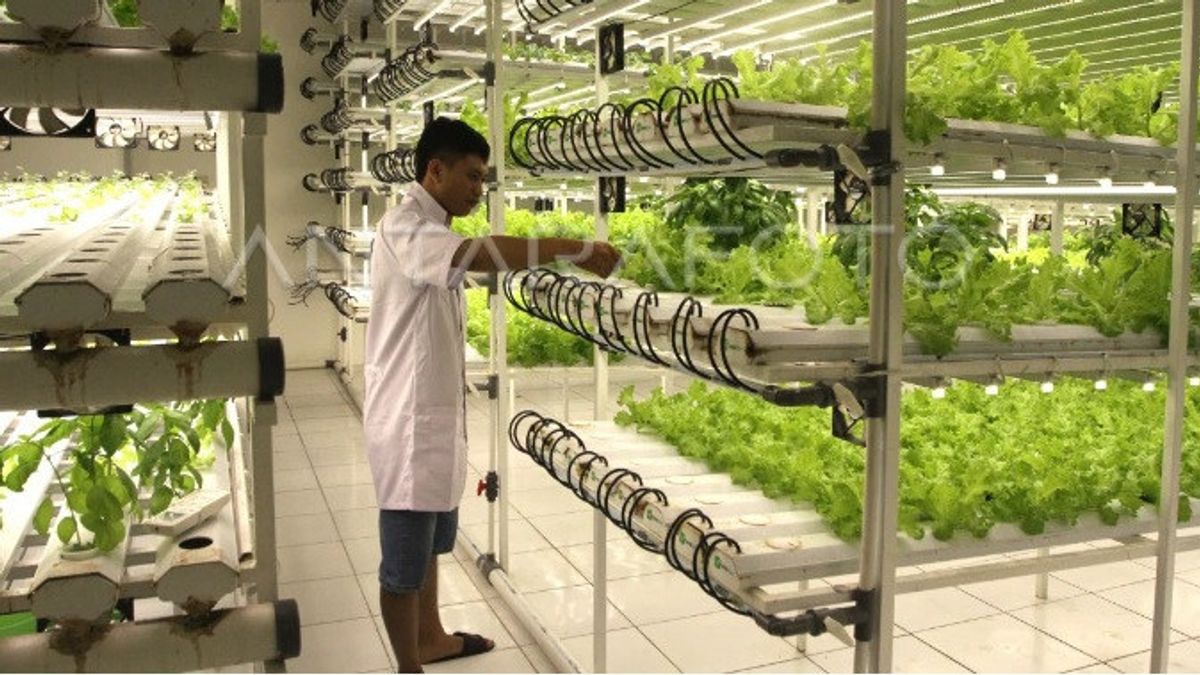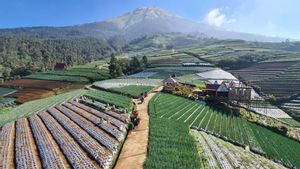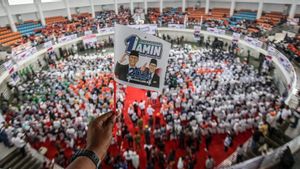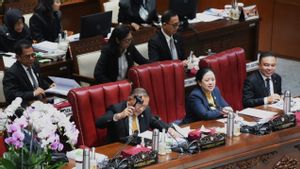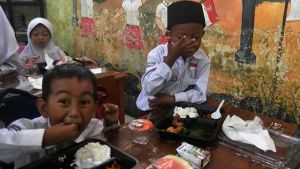JAKARTA In the midst of narrowing agricultural land, cultivation grows in a hydroponic way more popular among the community. And, hydroponics can be one way to make farmers' regeneration continue.
Indonesia is a country called an agricultural country because the economy depends or is supported by the agricultural sector. According to the Central Statistics Agency (BPS) as of August 2022, agriculture is one of the sectors that absorbs the largest workforce in Indonesia, which is 29.96 percent of 135.3 million people or around 40.64 million people.
But the agricultural sector is facing various problems. The agricultural land is decreasing due to the land conversion that occurs, as well as the lack of skilled human resources in agriculture. The regeneration of the poor farmer profession is the cause of Indonesia's agriculture in the crisis. Even according to the National Development Planning Agency (Bappenas), Indonesia is predicted to lose the farmer profession in 2063.
The decline in Indonesian people working in the agricultural sector was recorded in data from the Central Statistics Agency (BPS). According to BPS, in 1976, as many as 65.8 percent of Indonesians worked in the agricultural sector and this number decreased drastically to only 28 percent in 2019.
Many of the real factors are the cause of the negative trend in the national agricultural sector. One of them is the massive transfer of the farmer family profession to other economic sectors. Workers in the service sector experienced a rapid increase from 23.57 percent in 1976 to 48.91 percent in 2019.
The conversion of professions from farmers to workers in the service sector is certainly not without reason. Apart from the matter of paying in the service sector which is higher and more certain than the results of farming, there are other factors that are turbulent in influencing the transfer of this profession.
According to Bappenas, the biggest factor is the conversion of land. The area of national agricultural land continues to decline. The majority changed to palm oil, factories, housing, and various other functions.
But in recent years, the problem of the lack of agricultural land has been followed in other ways, one of which is farming using hydroponic techniques.
Citing the website of the Food Security and Agriculture Office of the Bojonegoro Regency Government, hydroponics comes from the Greek language, namely hydro, which means water and ponos which means power. Hydroponics is also known as soilles culture or cultivation of crops without soil. So, hydroponics is a cultivation of plants that utilizes water and without using soil as a medium.
According to agricultural observer Khudori, hydroponics is one solution to overcome agricultural land constraints. In addition, hydroponics is also more popular with young farmers, so it is hoped that it can help the regeneration process of farmers in Indonesia who are in crisis.
This hydroponic is just another way to farm, to get around the limited land. When the land is limited, we can try farming without a land-based farm. So it can be hydroponic, aeroponic that uses air media, and others," explained Khudori to VOI.
"Can this attract young farmers? Yes, it can or not. But indeed many young farmers have succeeded. What is certain is that this is just a way of farming and that most farmers experience problems with land is correct," he added.
Khudori does not deny that the agricultural problem in Indonesia is quite complicated. The poor regeneration of farmers can also not only blame millennials and Z who are considered reluctant to look at this sector.
According to BPS data, there are 6.18 million millennial farmers in Indonesia. This figure is around 21.93% of the total 28.19 million farmers in Indonesia.
Khudori actually highlighted the agricultural ecosystem, which according to him is not yet fully friendly to young farmers. He said the agricultural ecosystem is still divided, there is no connection from upstream to downstream, causing great risks.
Nevertheless, he said that actually many young farmers have succeeded in overcoming the problems of this ecosystem, including hydroponic farmers. According to Khudori, the successful young generation have other tactics, namely not entering or starting from upstream (lahan) first, but they enter from downstream (markets).
This young farmer can usually overcome ecosystem problems by reading the market situation. What kind of commodity do you like, how much will it cost. If they already control the market situation, then they enter upstream," Khudori explained.
SEE ALSO:
If it is reversed, they usually give up. Because it has produced such good vegetables, for example, but not absorbed by the market. Not trying to connect market needs with what he is planting can be a problem," he continued.
One of the young farmers who succeeded in hydroponic techniques was Oka Wahyudi from Banjarmasin, South Kalimantan. After falling up and down, this man who works as a teacher managed to gain rupiah coffers to inspire many people to follow in his footsteps to become a creative millennial farmer.
Oka's efforts under the Agoloka Hydroponic Specialist flag continue to grow. Until now, there are several partners who are partnered with the South Kalimantan Baznas with 2,000 holes in the Banjarmasin Jingah River which are managed by the community, 5,000 holes in the Darul Ilmi Islamic Boarding School in Liang Anggang, Banjarbaru and 8,000 holes in the Lestari Food House, Landasin Ulin District, Banjarbaru fostered by Bank Indonesia.
The English, Chinese, Japanese, Arabic, and French versions are automatically generated by the AI. So there may still be inaccuracies in translating, please always see Indonesian as our main language. (system supported by DigitalSiber.id)
